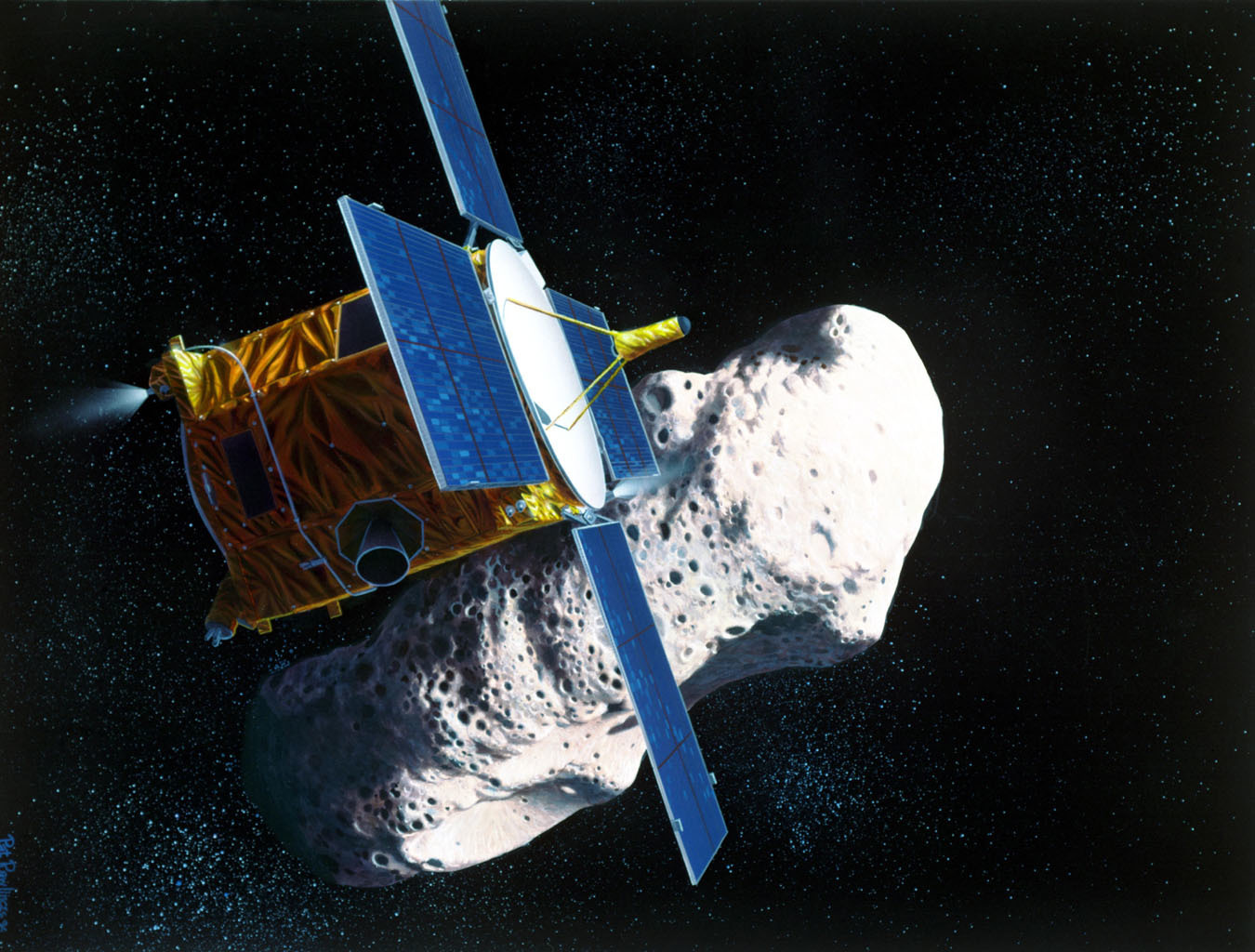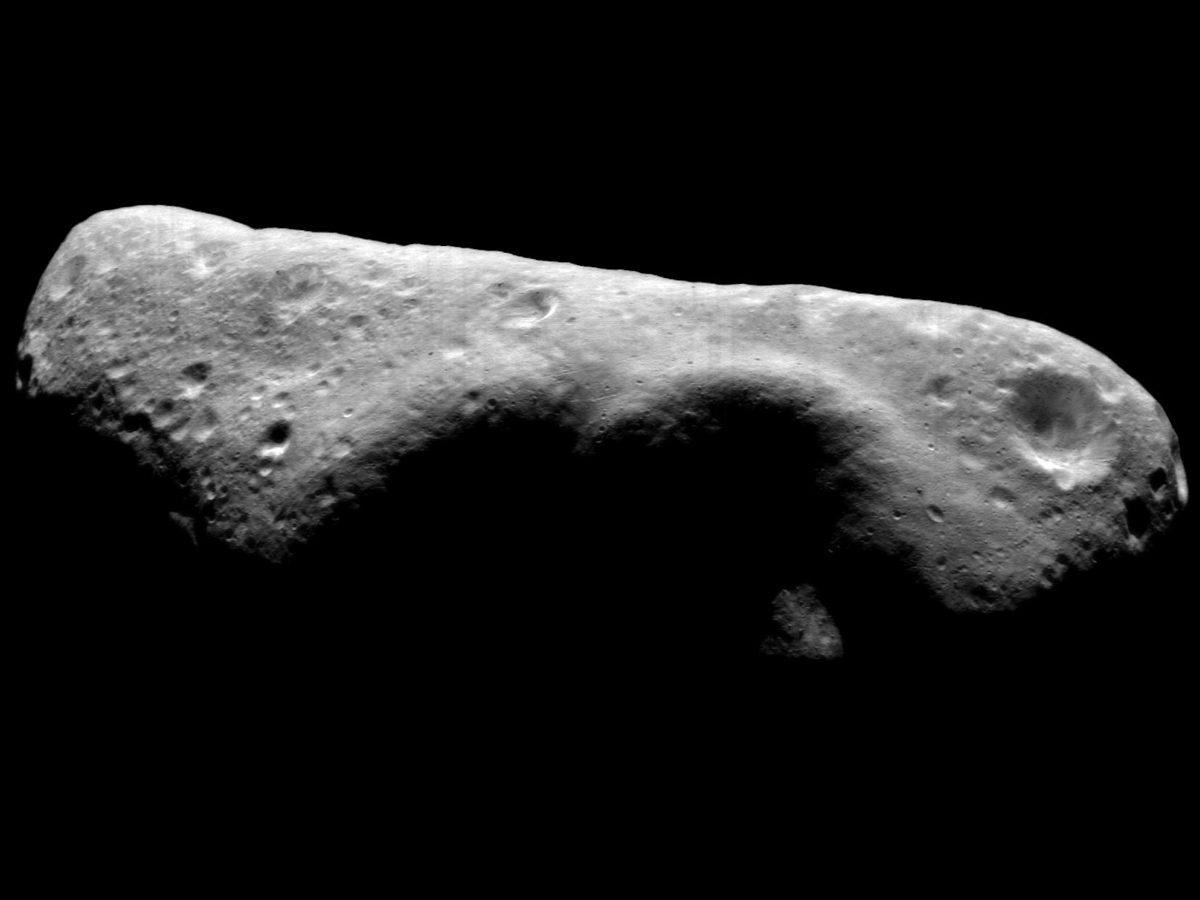Launched: Feb. 17, 1996
June 27, 1997: Flyby of asteroid Mathilde
Jan. 23, 1998: NEAR flew by Earth for a gravity assist
Dec. 23, 1998: Spacecraft flew by Eros for the first time
Feb. 14, 2000: NEAR entered orbit around Eros becoming the first human-made object to orbit an asteroid.
Feb. 12, 2001: NEAR touched down on Eros—the first time a U.S. spacecraft was the first to land on a celestial body.
Feb. 28, 2001: Last contact with NEAR. The spacecraft succumbed to the extreme cold.
Mission Summary
On the way to its primary mission, NEAR performed a 25-minute flyby of the asteroid 253 Mathilde June 27, 1997. Closest approach was about 750 miles (1,200 kilometers) at 12:56 UT. During the encounter, the spacecraft photographed 60 percent of the minor planet from a range of 750 miles (1,200 kilometers).
The information gathered indicated that the 4.5 billion-year-old asteroid is covered with craters and is less dense than previously believed.
NEAR first flew past Eros Dec. 23, 1998, at 18:41:23 UT at a range of about 2,380 miles (3,827 kilometers) (distance measured from the center of mass) during which it observed about 60 percent of the asteroid, and discovered that the minor planet was smaller than expected.
NEAR also found that the asteroid has two medium-sized craters, a long surface ridge, and a density similar to Earth’s crust.
NEAR finally moved into orbit around Eros at 15:33 UT Feb. 14, 2000, roughly a year later than intended, becoming the first human-made object to orbit a minor planet. Orbital parameters were about 200 × 225 miles (321 × 366 kilometers).

An artist's rendering of NASA's Near Earth Asteroid Rendezvous (NEAR) spacecraft at asteroid Eros. Credit: NASA

NASA's NEAR (Near Earth Asteroid Rendezvous) Shoemaker spacecraft landed on the surface of the 21-mile long asteroid Eros Feb. 12, 2001. This image mosaic shows Eros' southern hemisphere, offering a long-distance look at the cratered terrain where the spacecraft touched down. Credit: NASA